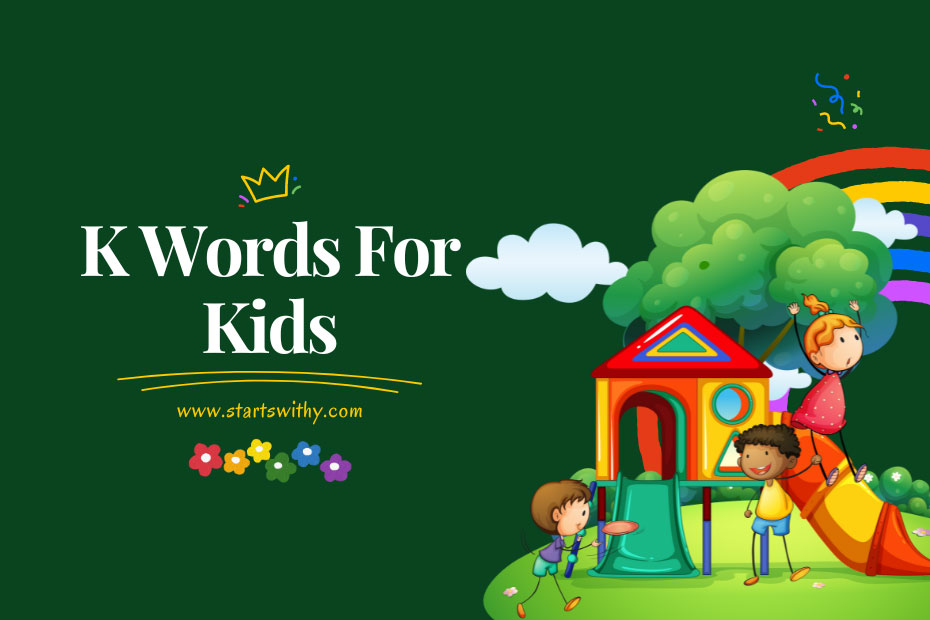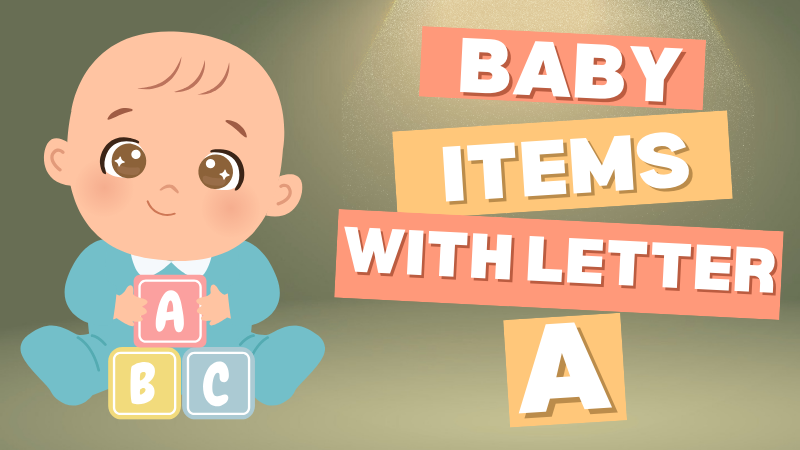Hey there! Are you a parent or teacher looking for fun and educational activities for kids in Kindergarten or Preschool? Well, you’re in luck! In this article, I’ll be sharing a list of K words that are perfect for young learners. These words are not only important for building vocabulary, but they also help children develop their reading and writing skills. So, get ready to dive into a world of words that will engage and captivate your little ones!
List of “K” Words for Kids
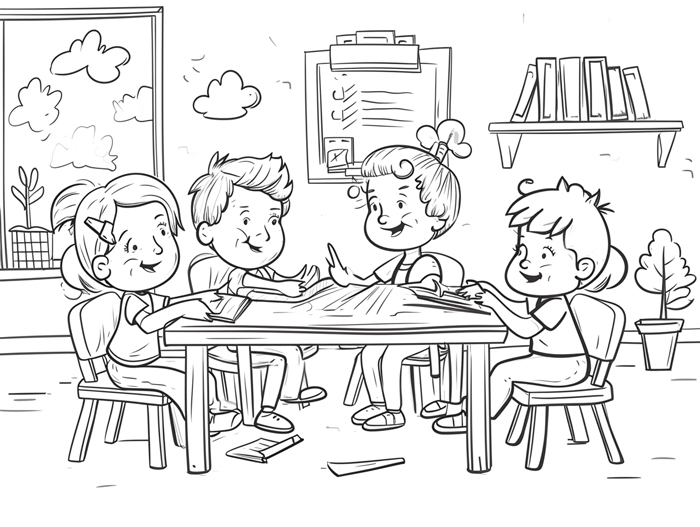
When it comes to teaching young children, building vocabulary is essential. As a kindergarten or preschool teacher, it’s important to introduce words that are not only age-appropriate but also fun and engaging for children. In this section, I’ll provide a list of “K” words that are perfect for young learners. These words will help them improve their reading and writing skills while having a great time.
- Kite: A popular word that kids love, a kite is a toy that flies in the sky. Introduce this word by showing pictures or even bringing a kite to the class. Encourage children to spell and write the word “kite” and let them create their own paper kites during craft time.
- King: The word “king” is a great opportunity to teach children about royalty and leadership. Talk to them about kings and queens in fairy tales and encourage them to draw their own picture of a king. This word is also a chance to introduce the sound of the letter “k” and its association with the word.
- Kangaroo: Kids are fascinated by animals, and the kangaroo is a unique animal with its pouch and strong legs. Teach children about kangaroos and have them practice saying and writing the word. Engage their imaginations by having them hop like kangaroos during playtime.
- Key: Keys are objects that children often see in their daily lives, whether it’s a key to the house or a key to a treasure chest in a storybook. Show children different types of keys and have them identify and spell the word “key.” You can also play a musical game with them, where they have to identify the sound of a key being shaken.
- Kindergarten: This is a word that holds special meaning for children who are attending or have attended kindergarten. Let them share their experiences and memories from kindergarten and encourage them to write or draw about it. This word also helps children learn the concept of letter sounds and formation.
- Kitchen: The kitchen is a familiar place for children, as it’s where meals are prepared and families gather. Teach them about the different items and activities that happen in the kitchen. Have them practice saying and writing the word “kitchen” and even create a play kitchen area in the classroom for imaginative play.
Preschool Words that Start with K
| Word | Fun Sentence for Kids |
|---|---|
| Kite | “Let’s go fly a colorful kite in the sunny sky!” |
| Kangaroo | “Look at the kangaroo hopping around the zoo!” |
| Koala | “The cute koala is eating eucalyptus leaves.” |
| King | “Once upon a time, there was a kind king.” |
| Key | “Use the key to unlock the magical treasure chest.” |
| Kitten | “The fluffy kitten loves to play with yarn.” |
| Kitchen | “We make yummy cookies in the kitchen.” |
| Kitty | “The little kitty purrs when you pet her.” |
| Kid | “Every kid loves playing at the playground.” |
| Kiss | “Give your mommy a sweet kiss goodnight.” |
| Kick | “Don’t kick the soccer ball too hard!” |
4 Letter Words for Toddlers that Start with K
| Word | Fun Sentence for Kids |
|---|---|
| Kite | “Look up, there’s a colorful kite in the sky!” |
| King | “The king wore a shiny crown on his head.” |
| Kiss | “Mommy gives you a gentle kiss before bed.” |
| Kids | “Playing with friends is fun; join the kids!” |
| Kitt | “The fluffy kitt jumped and played all day.” |
| Kiwi | “Try some sweet and juicy kiwi fruit for snack.” |
| Keen | “Be keen to learn new things every day.” |
| Kick | “Kick the soccer ball into the goal to score!” |
| Kind | “Being kind to others makes you a good friend.” |
| Keep | “Let’s keep your favorite toys tidy and neat.” |
Words That Start With K For Kids
| Word | Fun Sentence for Kids |
|---|---|
| Kite | “Let’s fly a colorful kite on a sunny day!” |
| Kangaroo | “The kangaroo jumped high and made us laugh.” |
| Koala | “The koala climbed the tree to find some leaves.” |
| King | “Once upon a time, there was a wise king.” |
| Key | “The key unlocks the treasure chest of imagination.” |
| Kitten | “The playful kitten chased its tail all day long.” |
| Kitchen | “Cookies are baking in the kitchen; can you smell them?” |
| Kitty | “The little kitty purrs when you cuddle it.” |
| Kid | “Every kid enjoys playing games with friends.” |
| Kiss | “Give your loved ones a warm and sweet kiss.” |
| Kick | “Kick the ball and score a goal in soccer!” |
Science Words That Start With K
| Word | Fun Sentence for Kids |
|---|---|
| Kinetic | “The kinetic energy of a rolling ball can make it go fast!” |
| Kelp | “Under the sea, you can find tall kelp forests.” |
| Kingdom | “Animals and plants belong to different kingdoms.” |
| Kilogram | “A bag of apples might weigh one kilogram!” |
| Kettle | “A kettle heats up water to make hot cocoa.” |
| Kelvin | “Scientists use Kelvin to measure temperature.” |
| Keystone | “The keystone holds the arch together in a bridge.” |
| Kidney | “Your kidney helps filter waste from your blood.” |
| Kinematics | “Kinematics is the study of motion and speed.” |
| Krypton | “Krypton is a gas that glows when electricity passes through it.” |
| Kepler | “Johannes Kepler discovered laws about planets’ orbits.” |
School Words that Start with K
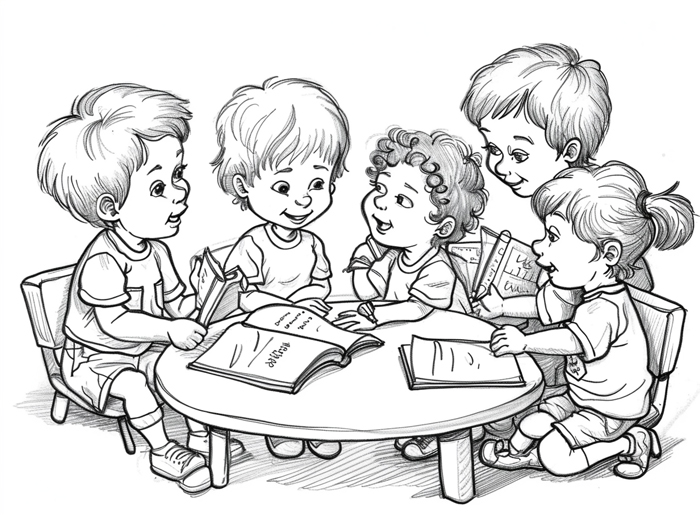
| Word | Fun Sentence for Kids |
|---|---|
| Keyboard | “The keyboard has all the letters and numbers we need!” |
| Kindergarten | “Kindergarten is where you make lots of new friends.” |
| Knowledge | “Learning gives you knowledge that will last a lifetime.” |
| Kite | “We can draw and color a kite during art class.” |
| Kit | “In your backpack, you have a kit with pencils and paper.” |
Cool Words that Start with K For Kids
| Word | Fun Sentence for Kids |
|---|---|
| Kangaroo | “The kangaroo is a cool animal that can hop really high!” |
| Kite | “Flying a kite on a windy day is super cool!” |
| Knight | “Imagine being a brave knight in shining armor.” |
| Karate | “Learning karate can make you feel like a superhero!” |
| Kaleidoscope | “Look through the kaleidoscope and see amazing patterns!” |
| Kayak | “Paddling a kayak down a river is an awesome adventure!” |
| Kingfisher | “The kingfisher bird is cool with its colorful feathers.” |
| Koala | “Koalas are cool because they live in trees!” |
| Keyboard | “Playing music on a keyboard can be really cool.” |
| Kitten | “A tiny, fluffy kitten is the coolest pet!” |
| Kick | “Giving the soccer ball a powerful kick is so cool!” |
Positive Words that Start with K for Kids
| Word | Fun Sentence for Kids |
|---|---|
| Kindness | “Showing kindness means being a good friend.” |
| Keep | “Keep trying, and you’ll get better at it!” |
| Knowledge | “Learning new things gives us knowledge to grow.” |
| Kudos | “Kudos to you for a job well done!” |
| Keen | “Being keen helps you notice exciting things.” |
| Kite | “Flying a kite on a sunny day is pure joy!” |
| Key | “You hold the key to unlock your dreams.” |
| Knack | “Everyone has a knack for something special.” |
| Kinship | “The bond of kinship makes family so wonderful.” |
| Keepers | “We are all keepers of our planet’s future.” |
| Kid | “Being a kid is a time of laughter and adventure!” |
Benefits of Learning K Words in Kindergarten and Preschool
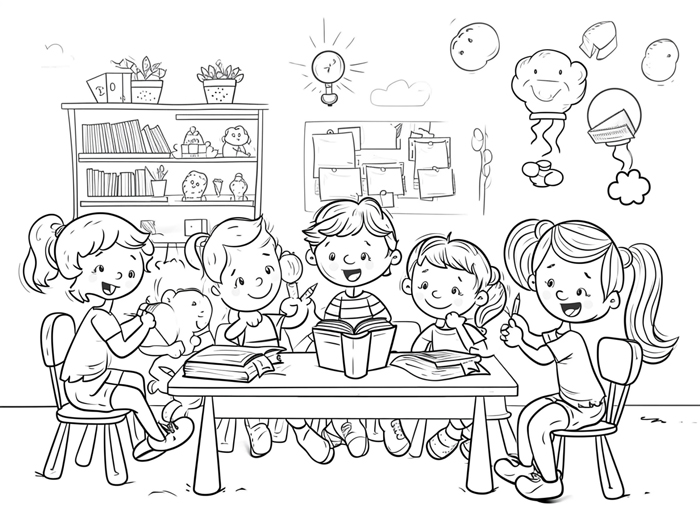
Improves Vocabulary
Learning K words in kindergarten and preschool offers several benefits, and one of them is an improved vocabulary. By introducing K words to young learners, we help expand their word bank and allow them to express themselves more effectively. These words are carefully selected to be age-appropriate, engaging, and fun, ensuring that children enjoy the learning process while building their language skills.
Enhances Reading Skills
Another advantage of learning K words in kindergarten and preschool is the enhancement of reading skills. As children become familiar with these words, they start recognizing them in different contexts, which fosters their reading comprehension. By encouraging children to practice reading K words through engaging activities and exercises, we create a solid foundation for their future reading abilities.
Sparks Creativity and Imagination
In addition to improving vocabulary and reading skills, learning K words also sparks creativity and imagination. Each K word offers a unique opportunity for children to explore and imagine different concepts and scenarios. From the wide open sky with a beautiful kite soaring through the air to the majestic world of kings and their grand castles, children’s minds are stimulated, allowing them to think creatively and dive into imaginative play.
Promotes Social Interaction and Communication
Learning K words in kindergarten and preschool promotes social interaction and communication among children. Engaging in activities related to these words, such as drawing pictures of kangaroos or discussing experiences from kindergarten, encourages children to communicate with their peers, share ideas, and express themselves. This not only enhances their language skills but also fosters their social and emotional development.
Builds Confidence and Motivation
By successfully learning and using K words, children in kindergarten and preschool build confidence and motivation in their language learning journey. These small achievements serve as building blocks, motivating them to learn more, explore new words, and strive for further growth. Celebrating their progress and encouraging them to use K words in different contexts instills a sense of achievement and keeps them eager to continue learning.
Conclusion
Learning K words in kindergarten and preschool brings a wide range of benefits, from improving vocabulary and reading skills to sparking creativity and promoting social interactions. By providing children with a solid foundation in language learning, we equip them with essential skills that will serve them well throughout their academic journey and beyond.
Methods to Teach K Words in Kindergarten and Preschool
Interactive Learning Activities
In teaching K words to kindergarteners and preschoolers, interactive learning activities can be highly effective. Here are some methods that can engage children and make the learning process enjoyable:
- Word Puzzles: Introduce word puzzles like crossword puzzles or word searches that focus on the K words. This activity not only enhances their vocabulary but also improves their problem-solving skills.
- Flashcards and Matching Games: Use flashcards to show K words along with corresponding images. Encourage children to match the cards with the correct words, promoting visual recognition and word association.
- Sensory Bins: Create sensory bins with materials that represent K words, such as small toys or objects that start with the letter K. Allow children to explore the contents of the bins while discussing the words and their meanings.
- Group Activities: Conduct group activities like “I Spy” or “Show and Tell,” where children have to identify or explain objects that start with the K sound. This encourages social interaction and language development.
Storytelling and Word Games
Storytelling and word games are excellent ways to engage young learners and help them connect with K words in a meaningful way:
- Rhyme Time: Incorporate rhymes and songs that feature K words. This not only helps children remember the words but also improves their phonemic awareness.
- Alphabet Stories: Create stories where the main characters have names that start with the letter K. Children will be excited to hear these stories and can even create their own versions using K words.
- Word Charades: Play word charades, where children have to act out or pantomime K words for others to guess. This activity promotes creativity, communication, and vocabulary recall.
- Book Reading: Choose books that focus on K words or have characters with names starting with K. While reading, encourage children to identify and repeat those words, building their reading skills and word recognition.
By using these interactive learning activities and incorporating storytelling and word games, teachers can make learning K words engaging and fun for kindergarteners and preschoolers. These methods not only promote vocabulary development but also enhance social interaction, creativity, and reading skills.
Recommended K Words for Kindergarten and Preschoolers
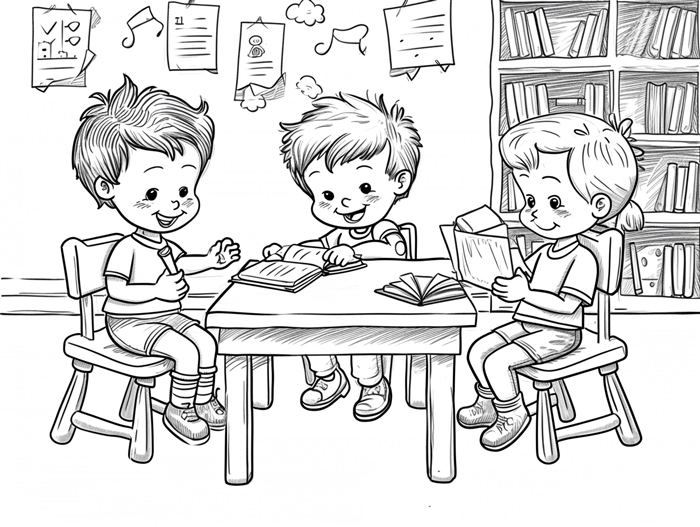
Colors
Teaching colors is an essential part of language development for kindergarten and preschool children. By introducing them to different colors, we can expand their vocabulary and enhance their ability to describe the world around them. Here are some recommended K words for colors:
- Red: Show children objects that are red, such as apples, fire trucks, or ladybugs. Encourage them to say the word “red” and associate it with the color they see.
- Blue: Use visual aids like blue toys or pictures of the sky and the ocean to introduce the word “blue”. Engage children in a conversation about things that are blue.
- Yellow: Show children items like bananas, sunflowers, or school buses that are yellow. Encourage them to label these objects using the word “yellow”.
Numbers
Learning numbers is a crucial step in early math skills for kindergarten and preschool children. It sets the foundation for future learning and problem-solving. Here are some recommended K words for numbers:
- One: Show children one object or ask them to count one finger. Reinforce the concept of “one” by associating it with everyday objects.
- Two: Have children identify pairs of objects like shoes or socks. Help them understand that “two” means having two of something.
- Three: Use everyday scenarios like counting three apples or three blocks to teach the concept of “three”. Encourage children to count aloud as they identify the objects.
Animals
Introducing children to different animals not only helps expand their vocabulary but also fosters their curiosity about the natural world. Here are some recommended K words for animals:
- Dog: Show children pictures of dogs and model the word “dog” for them. Incorporate books or stories with dog characters to reinforce their understanding of the word.
- Cat: Encourage children to imitate the sound a cat makes and associate it with the word “cat”. Show them pictures or toys of cats to enhance their connection to the word.
- Elephant: Use visual aids or toys to help children visualize and remember the word “elephant”. Encourage them to make elephant sounds and imitate their movements.
Remember, the key to successfully teaching these K words is to make learning fun and interactive. Incorporate games, art projects, and group activities to engage children and reinforce their understanding of these words.
Tips for Parents to Help Kids Learn K Words at Home
As a parent, you play a crucial role in your child’s early education. One way you can support their learning journey is by helping them learn K words at home. Here are some tips to make the learning process fun and engaging for your little one:
Create Word Flashcards
Flashcards are a fantastic tool for teaching new words and building vocabulary. Here’s how you can create word flashcards for your child:
- Choose K words that you want to introduce to your child. You can focus on categories like colors, numbers, animals, or any other topic of interest.
- Write each word on a separate index card or piece of paper. Make sure to use clear and legible handwriting.
- Include colorful pictures or illustrations of the word on the flashcards. Visuals can help your child make connections and remember the words better.
- Practice with the flashcards by showing your child one card at a time and encouraging them to say the word out loud. You can also ask them to identify the object or concept related to the word.
By using word flashcards, you are not only teaching new words but also improving their reading skills and language comprehension.
Read Aloud Everyday
Reading aloud to your child is an excellent way to expose them to new words and enhance their vocabulary. Follow these tips to make reading sessions engaging and enjoyable:
- Choose age-appropriate books that are rich in K words. Look for books that focus on colors, numbers, or animals to align with what your child is learning at school.
- Read with enthusiasm and use expressive voices to bring the characters and stories to life. This helps engage your child’s attention and keeps them interested in the reading experience.
- Pause occasionally while reading a sentence and encourage your child to fill in the missing word. This interactive approach encourages active participation and helps reinforce their understanding of K words.
- After finishing a book, discuss the story with your child. Ask them questions about the plot, characters, and any K words they encountered. This promotes comprehension and critical thinking skills.
Reading aloud not only exposes your child to new words but also fosters a love for reading and expands their imagination.
Remember, learning should never be a chore for your child. By implementing these tips, you can create a positive and enjoyable environment for them to learn and grow.
Conclusion
By implementing these strategies at home, parents can greatly enhance their child’s learning experience and development of “K” words. Creating word flashcards with colorful pictures and practicing with them is an effective way to improve reading skills and language comprehension. Reading aloud to children using age-appropriate books that focus on colors, numbers, or animals is another valuable tool. It is important to read with enthusiasm, pausing to encourage active participation, and discussing the story afterwards to promote comprehension and critical thinking skills.
The key to success lies in creating a positive and enjoyable learning environment for children. By incorporating these techniques into daily routines, parents can help their child develop a strong foundation of “K” words, setting them up for future academic success. Remember, learning should be fun and engaging for children, so be sure to make it an enjoyable experience. With consistent practice and a supportive approach, parents can play a crucial role in their child’s language development and overall educational journey.
